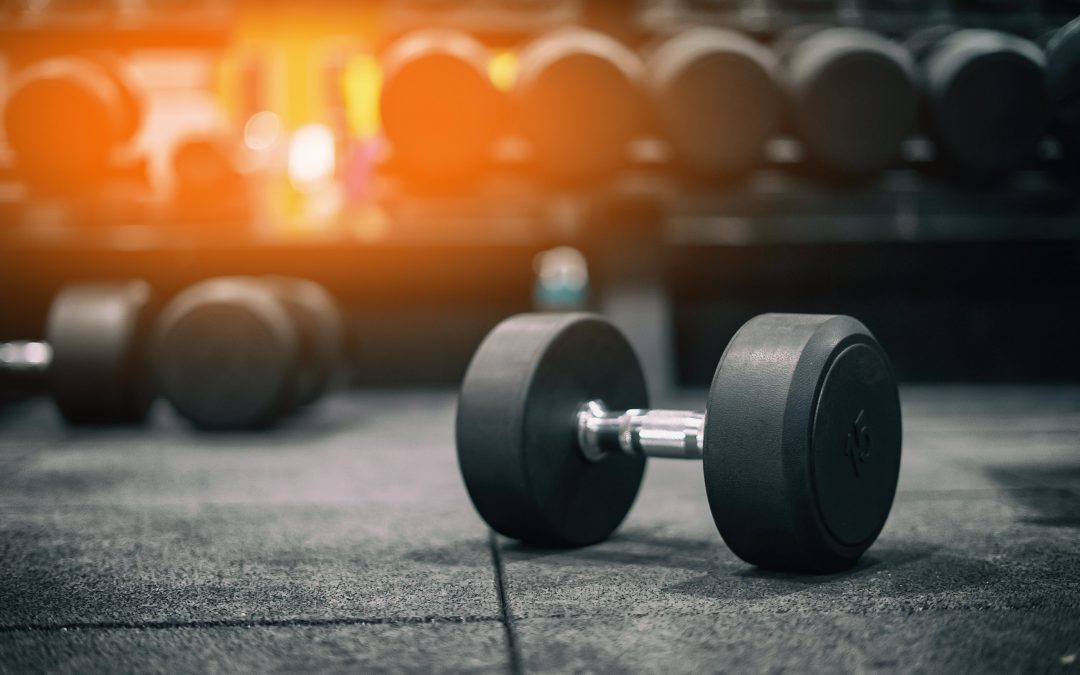Dumbbell front raises are a classic muscle-building exercise that can build strong, shapely shoulders if you do them properly. Check out our guide to shoulder front raise technique, weight, and equipment.
What are dumbbell front raises?
Dumbbell front raises are one of the most popular exercises for shoulder day in the gym. But not everyone gets the technique right. When you do them properly, dumbbell front raises are effective even at pretty light weights. So let’s take things right back to basics to explore the benefits of front raises, muscles worked, and how much weight to use for front raise workouts.
Benefits of the dumbbell front raise
This article is going to talk about shoulder front raises using a pair of dumbbells, but it’s worth knowing that dumbbells aren’t the only way to do a front raise. You could also use kettlebells, a barbell, or a fixed barbell. But dumbbells are the easiest and most accessible way to do a front raise. Using dumbbells means you can work each arm separately (so the strongest side won’t take over).
The shoulders are made up of three major parts: the front deltoids, side or lateral deltoids, and rear deltoids. The front delts are the muscles that attach into your chest, and give that rounded shape to the front of your shoulders.
Dumbbell front raises are a great exercise for building strength, size, and mass in your front deltoids. What is the difference between front and lateral raises? Front raises work mostly the anterior deltoids (and some chest) and lateral raises develop the outside part of the shoulder. If you want to develop great-looking shoulders with amazing shape, you need to work your front delts as well as every other part of the shoulder.
But that’s not the only benefit of the dumbbell front raise. This exercise also improves your shoulder mobility and stability, and can even work your abs and core.
Muscles worked in dumbbell front raise
The main muscles worked in a dumbbell front raise is that front deltoid (officially called the anterior deltoid). That’s not all: front raise will also work the lateral or side delts, biceps, trapezius at the top of your back, and the chest to some extent.
The best way to make your dumbbell front raise work more muscles is to use different weights and angles, by doing standing front raise (instead of sitting) or by changing the angle of the bench for seated front raise.
How to do dumbbell front raise
Get your dumbbell front raise technique right and you will build more muscle and protect your shoulders without having to use insanely heavy weights. There are two ways to do a dumbbell front raise: standing or seated on a bench. Let’s go through both options.
How to do standing dumbbell front raise
Stand with feet shoulder width apart
Facing a mirror can be useful so you can see how high you are raising the dumbbells, but it’s not vital.
Start with the dumbbells in front of you
Hold the dumbbells one in each hand, and have your arms down in front of you so the dumbbells are resting on the front of your thighs (palms facing towards you).
Perform the dumbbell front raise
Lift your arms to around eye-height, keeping your arms straight (a slight bend at the elbows is OK) and your palms facing downwards.
Lower the weight with control
Once you have lifted the dumbbells to eye-height, lower the weights back down with control.
Don’t swing the weights
It’s important to use your shoulder muscles throughout the front raise, and the best way to do this is to avoid swinging the weights or throwing your body backwards. Hold your core and glutes tight. Having a slight bend in your knees can help keep your body still.
How to do seated dumbbell front raise
Set up your bench
Changing the angle of your bench will slightly alter how you do a seated dumbbell raise. Putting the backrest straight will work the shoulders more, and leaning the backrest back slightly will bring in more of the chest muscles.
Sit on the bench
Sit on the seat of the bench with feet planted on the ground, dumbbells resting in your lap.
Begin the front raise
Take the dumbbells off your lap ad lower your arms down by your sides, palms facing down ad slightly inwards.
Perform a seated front raise
Lift the weights slowly up to about eye-height, with straight or very slightly bent arms. Pause at the top then lower back down with control.
Dumbbell front raise variations
Seated and standing dumbbell raises are just two ways to vary this important shoulder exercise. You can also do different variations with gym machines and strength equipment. Are seated front raises better than standing? Some people would say so, because they remove the temptation to swing the body and use momentum.
Cable front raise
Using a cable machine keeps the tension on your front deltoid throughout the movement. Set up a low cable and use handles or a straight bar attachment to do either single-arm or double-arm cable front raises.
Prone incline dumbbell front raise
This is a great variation to prevent using momentum in a front raise. Set up a bench on an incline and lie face down with your arms either side of the bench. Do dumbbell front raises in this position.
Hammer dumbbell front raise
To do hammer front raises, change your grip from palms-down to palms facing each other. This slightly changes the muscles you will work.
Barbell front raise
You can use a barbell to do front raises, but be aware that your dominant side is likely to take over especially as you fatigue.
Plate front raise
Doing front raises with a weights plate is a brilliant way to switch up not just the load, but your grip too. You will naturally use a hammer grip (palms facing each other) which works a slightly different part of the front deltoid.
Common dumbbell front raise mistakes
Lifting too heavy
There’s no need to lift really heavy dumbbells. If you use great technique and keep the reps slow and controlled you will feel the burn even with light dumbbells.
Using momentum
Don’t use your body to swing the weights up during a dumbbell front raise, you are just cheating yourself out of the proper movement.
Going too high
There’s no need to lift the dumbbell any higher than eye-level to perform front raises properly.
Not controlling the negative
Pay attention to the negative (lowering) part of each rep rather than letting the weight swing back down quickly.
How to add a front raise to your workout
How many times a week should you do dumbbell front raises? We recommend you add them in just once per week, because the shoulders (and especially the front deltoids) get a lot of work from other exercises like overhead pressing, dips, press ups and any chest workouts.
Be sure to switch up the type of front raise exercises you do. Even if you want to stick to dumbbell front raises, there are lots of variations. You can do standing dumbbell front raise, seated dumbbell front raise, and alternating dumbbell front raises as a way to work your shoulders.
Front raises for shoulders and chest
Dumbbell front raises are one of the best exercises for the front of the shoulders, biceps, and chest. They are beginner-friendly and can be scaled upwards as you get stronger. There’s no limit to front raises, which is why they’re an essential part of every good shoulder workout.



